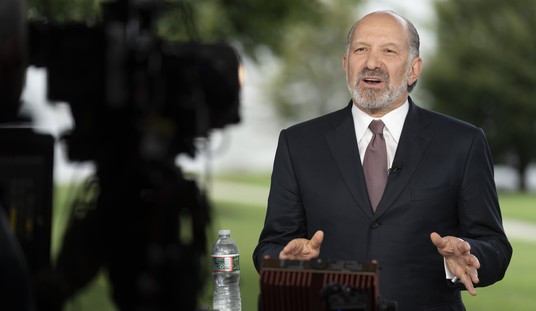The Pentagon slashed the budget-related furloughs for civilian employees from 11 days to six days today, a move that helps the department “buy back some readiness,” according to Chairman of the Joint Chiefs of Staff Gen. Martin Dempsey.
“When I announced my decision on May 14 to impose furloughs of up to 11 days on civilian employees to help close the budget gap caused by sequestration, I also said we would do everything possible to find the money to reduce furlough days for our people,” Defense Secretary Chuck Hagel said in a memo to employees. “With the end of the fiscal year next month, managers across the DoD are making final decisions necessary to ensure we make the $37 billion spending cuts mandated by sequestration, while also doing everything possible to limit damage to military readiness and our workforce.”
Hagel noted that the original plan was for civilian furloughs of up to 22 days when sequestration took effect March 1 because the department faced shortfalls of more than $30 billion.
“As early as January, DoD leaders began making painful and far reaching changes to close this shortfall: civilian hiring freezes, layoffs of temporary workers, significant cuts in facilities maintenance, and more. We also sharply cut training and maintenance. The Air Force stopped flying in many squadrons, the Navy kept ships in port, and the Army cancelled training events. These actions have seriously reduced military readiness,” he wrote in the memo.
That still left a shortfall of $11 billion by early May, when the 11-day furloughs were announced.
“Where necessary, we have taken aggressive action to transfer funds among services and agencies. And the furloughs have saved us money,” Hagel continued.
“As a result of these management initiatives, reduced costs, and reprogramming from Congress, we have determined that we can make some improvements in training and readiness and still meet the sequestration cuts. The Air Force has begun flying again in key squadrons, the Army has increased funding for organizational training at selected units, and the Navy has restarted some maintenance and ordered deployments that otherwise would not have happened. While we are still depending on furlough savings, we will be able to make up our budgetary shortfall in this fiscal year with fewer furlough days than initially announced,” he added.
The secretary noted that the situation of the workforce next year is uncertain if sequestration stands, as an additional $52 billion will have to be cut from the Defense Department for FY 2014 starting Oct. 1.
“I want to assure our civilian employees that we will do everything possible to avoid more furloughs,” Hagel said.
“When sequestration took effect on March 1st, I said we would lead through it and I’m encouraged to see several of you stay in touch with me and your leaders,” Dempsey said on his Facebook page. “There’s still work to be done. We’ll continue to do all we can to gain budget certainty, time, and flexibility. Our force and our nation demand no less.”
A chunk of the current savings found came from less than expected costs of transporting equipment out of Afghanistan.
A senior defense official at the Pentagon today likened the reshuffling of funds to “pouring water and milk in the glass at some time and when it overflows blaming the milk. I mean, I can’t pick one thing.”
“There were a whole series of actions we took, finding reduced costs. Reprogramming was very important. And we are also able to shift around some other funding from the Navy, some lower priority Navy programs into the Army. So it’s a bunch of different things,” the official said. “And it wasn’t just furlough days. We brought back some training.”
Reporters were told that it will take the Air Force “months” to catch up from a three-month stand down.
The official brushed off suggestions that the Pentagon would be seen as crying wolf over the severity of the sequestration cuts.
“I got to tell you, you know, it was one of the things you wake up and night and you go, how am I going to make this work? Or how’s the department going to make this work?” the official said. “…The reprogramming was there, but it’s not a guarantee. These are single committee veto items. And we didn’t get all of it. We didn’t know about some of the things like identifying funding we wouldn’t need for transportation costs. The Air Force found some reductions in weapons system sustainment. We are able, as I mentioned, to move some lower priority Navy money to areas we needed it more.”
“So there were a whole bunch of things that broke in our favor, but three months ago, with $11 billion short, I don’t think we had a lot of choice, unless we were willing to cut more training and maintenance. And we felt that we had done that as much as we should…there’s a old saying in the budget world that time is the best budget analyst.”
House Armed Services Committee Chairman Buck McKeon (R-Calif.) said he was “pleased” that the department found a way to alleviate furloughs, but cautioned “we are still miles away from resolving sequestration.”
“The House has voted multiple times to end these mindless, automatic cuts that are creating a military readiness crisis,” McKeon said. “Unfortunately, until the president throws the full weight of the White House behind a unified, bipartisan effort to steer us out of this mess, I fear that furloughs will turn to layoffs, and a readiness crisis will turn to a readiness emergency.”
Rep. John Barrow (D-Ga.), a Blue Dog who co-sponsored with Rep. Doug Lamborn (R-Colo.) the amendment passed in the House defense appropriations bill that blocks civilian furloughs next fiscal year, called today’s announcement “a great first step” but not enough.
“There is a bipartisan consensus in the House of Representatives that we can more efficiently cut federal spending than an across-the-board budget sequester,” Barrow said. “Folks who work at Fort Gordon, and in military installations all across the country, are paying the price for a broken system in Washington. That’s not fair and that’s not smart. We need to do all we can to make sure we cut spending in the right places, and not from the folks we rely on for our national security.”
Sen. Richard Blumenthal (D-Conn.) called today’s news welcome “not only for hardworking Defense Department employees, but also for our national security and defense.”
“I pressed for this reduction in furlough days because it was unfair and unfortunate for military readiness,” Blumenthal said. “I am hopeful that such shortsighted supposed savings can be avoided in the future because they deprive essential employees of both work and wages.”
Rep. Rob Wittman (R-Va.), chairman of the House Armed Services Subcommittee on Readiness, said he remains “concerned about the uncertainty for these employees, and for the overall state of our nation’s defense.”
“There’s no question that while the individuals and families affected by these furloughs will feel relief until September 30, so many questions remain unanswered. That’s why I have called on Congress to finish its work, and to stay in Washington, D.C. to debate and address critical issues, such as sequestration and the overall appropriations process. Congress has left town without providing any certainty for a fiscal year that begins in less than 60 days. That’s simply unacceptable,” Wittman said.
“Fifty-five days from now we face the beginning of a new fiscal year and an additional $52 billion in cuts. No one wants to see furloughs again in fiscal year 2014 and my fear is that if we do not work to replace the sequester cuts, we will face even more drastic consequences.”









Join the conversation as a VIP Member